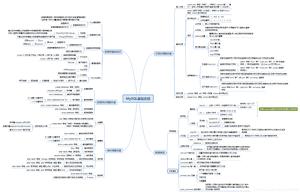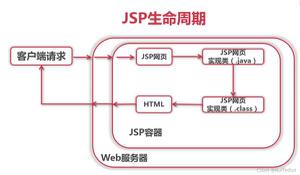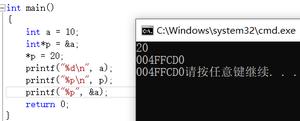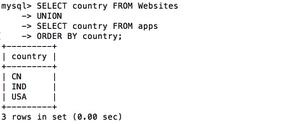Vue基础知识总结(一)

一、基本语法:
1、实例化:new Vue({})
2、el:一定是根容器元素(vue的作用域就是这个根元素内),就是写选择器
data:用于存储数据
methods:定义方法(方法里this指向当前vue实例化的对象,但是获取属性和方法不需要this.data.name,直接this.name即可,获取方法也是如此)
二、数据绑定:给属性绑定对应的值
(1)v-bind的使用:v-bind:href="website",v-bind:value="value"(注意此处就不需加双大括号了)
(2)v-html用于绑定输出html元素:<div v-html="websiteTag"></div>
三、事件:
(1)v-on:click="事件名"(有参数的话就是事件名(参数)),简写:@click="事件"
(2)事件修饰符:v-on:click.事件修饰符
v-on:click.once="add(1)",v-on:mousemove.stop,v-on:click.prevent="add"(阻止默认事件)
(3)键盘事件keyup、keydown,
键盘修饰符:keyup.enter、keyup.alt.enter(链式:alt+enter键)
四、双向数据绑定:input/select/textarea
(1)v-model指令
(2)ref机制:给input标签标记
<input ref="name" v-on:keyup="logName">
方法里面利用this.$refs.name.value去获取值
五、动态绑定css样式:
(1)v-bind:class="{red:true,blue:true}"
六、条件与循环
(1)v-if/v-else-if/v-else、v-show,两者的区别(有无实际dom元素的区别)
(2)v-for、列表渲染template
(3)v-for里面对数组默认的有{{$index}}索引,对json对象默认有{{$index}}、{{$key}}键值,或:v-for="(k,v,index) in json"
注意:在数组里面,小括号里面的参数第一位是value值,第二位是索引值;而在json里面,第一位是value值,第二位是key值,第三位是索引值
七、事件深入:
(1)事件对象$event:@click="show($event)"
(2)事件冒泡:
阻止冒泡:
1、原生的:$event拿到事件对象,然后方法里面ev.cancelBubble=true
2、@click.stop="show()"
阻止默认行为:
1、原生的:$event拿到事件对象,然后方法里面ev.preventDefault()
2、@contextmenu.prevent(阻止右键默认行为)
(3)键盘事件:@keydown、@keyup、$event、ev.keyCode(获取键值)
常用键:@keydown.13或@keydown.enter/@keydown.up(上下左右均可)
八、属性
v-bind绑定属性:v-bind:src="url"
<img src="{{url}}" alt=""> 此方式效果可以出来,但会报错
<img v-bind:src="url" alt="">,效果出来,不会发请求
v-bind简写就是冒号::src="url"
九、class和style
(1)class:
1、:class="[red,blue]" red/blue指的是data里的数据,data里的red/blue再去指向实际的class名
2、:class="{red:true,blue:true}"或者:class="{red:a,blue:b}",a/b为data里的数据true/false
3、:class="json",即把方法2的json放到data里面去
(2)style:跟class写法一样
1、:style="[c,b]";
注意:复合样式需要采用驼峰命名法
2、:style="{width:\'200px\',color:\'red\'}"或者:style="{width:a,color:b}"
3、:style="json"
十、模板
v-model指令
{{msg}} 数据更新、模板随着变化
{{*msg}} 数据只绑定一次
{{{msg}}} HTML转意输出
十一、过滤器
过滤模板的数据
(1)系统提供一些过滤器:capitalize/lowercase/uppercase
语法:{{msg|fiter}}单个、{{msg|fiterA|fiterB}}多个
currency 钱的标志
{{msg|fiter 参数}},比如{{12|currency "¥"}}就变成:¥12.00
十二、交互
如果vue想做交互,必须引入vue-resource
一般三种交互方式:get、post、jsonp,或直接this.$http({……})
1、get:
向本地文件取数据
//1、this.$http,指向当前的ajax对象//2、promise的写法
this.$http.get(\'a.txt\').then(function(res){
alert(res.data);//成功
},function(res){
alert(res.status);//失败
});
向服务器传参数,然后取结果
this.$http.get(\'get.php\',{ a:1,
b:2
}).then(function(res){
alert(res.data);
},function(res){
alert(res.status);
});
2、post:需要加请求头信息
this.$http.post(\'post.php\',{ a:1,
b:20
},{
emulateJSON:true
}).then(function(res){
alert(res.data);
},function(res){
alert(res.status);
});
3、jsonp
this.$http.jsonp(\'https://sp0.baidu.com/5a1Fazu8AA54nxGko9WTAnF6hhy/su\',{ wd:\'a\' //参数
},{
jsonp:\'cb\' //指定callback名字,默认就是callback
}).then(function(res){
alert(res.data.s);
},function(res){
alert(res.status);
});
4、this.$http()
this.$http({ url:地址
data:给后台提交数据,
method:\'get\'/post/jsonp
jsonp:\'cb\' //callback名字
}).then();
以上是 Vue基础知识总结(一) 的全部内容, 来源链接: utcz.com/z/378550.html








